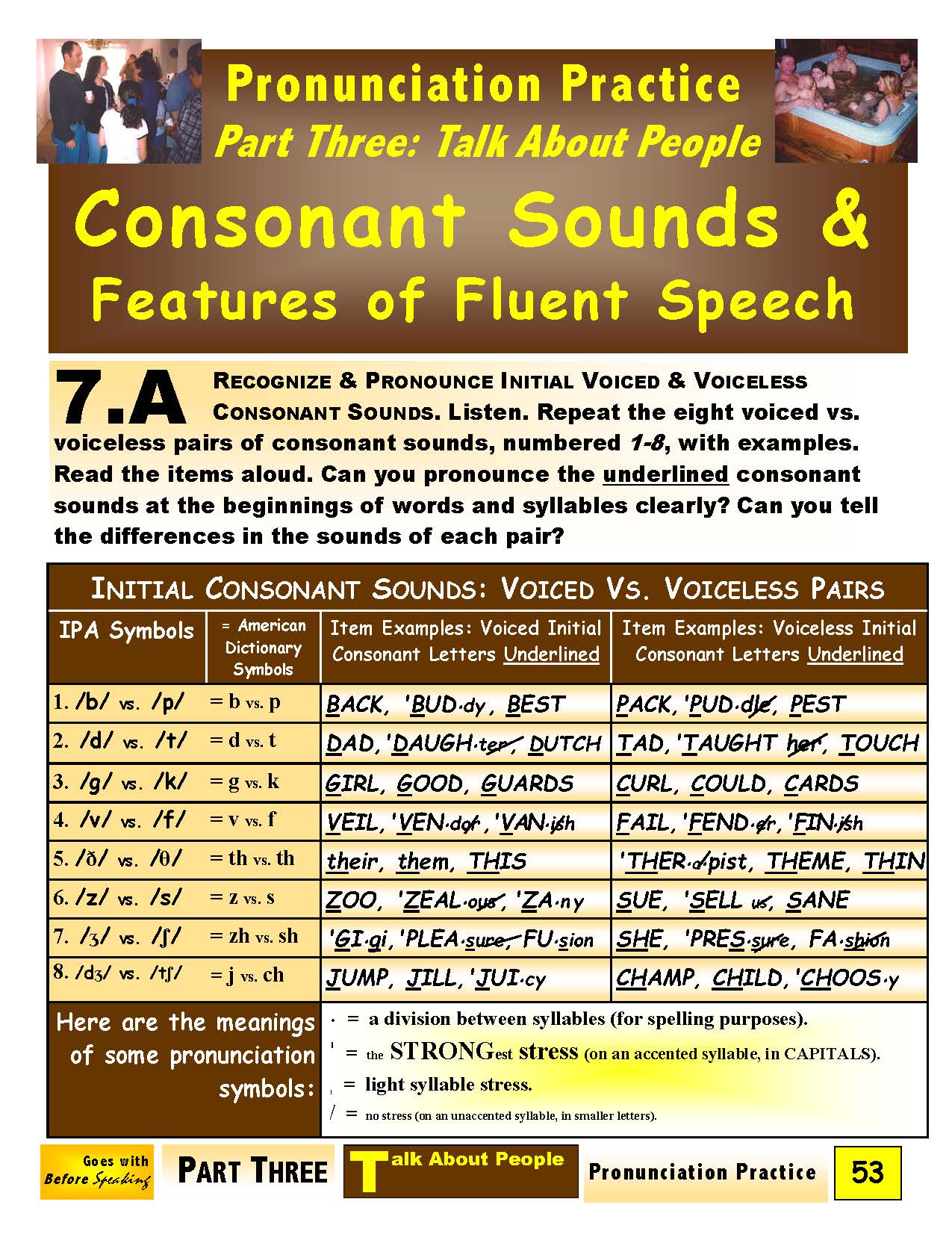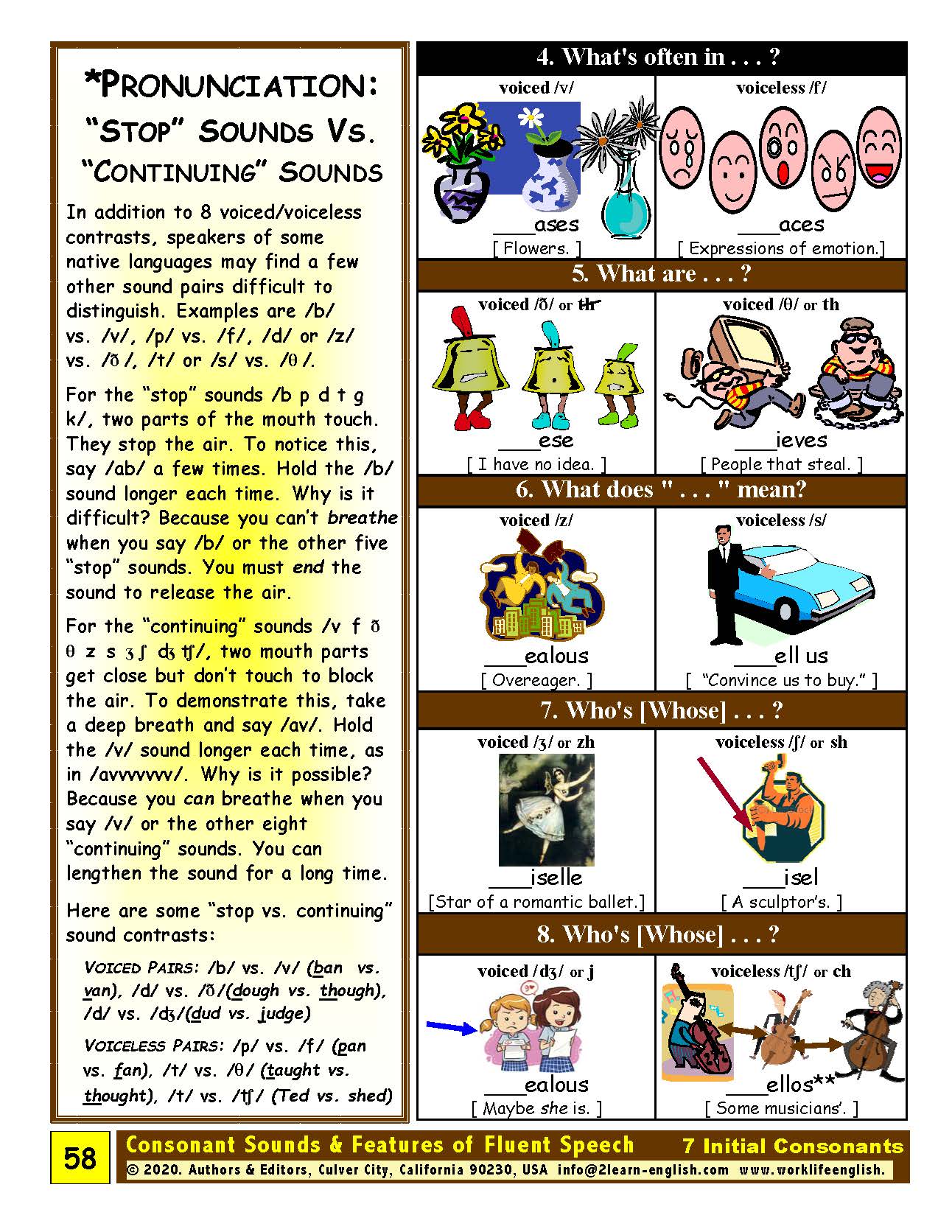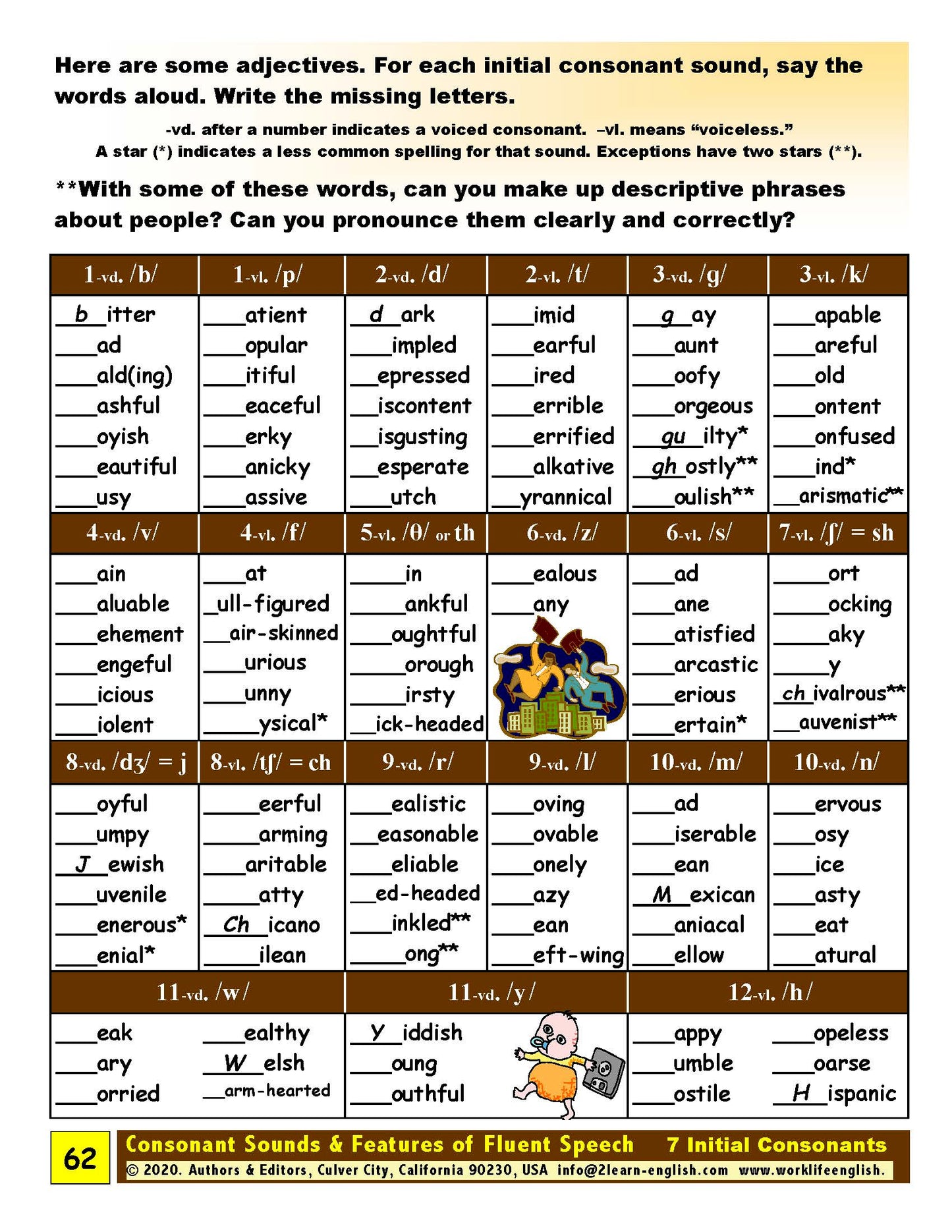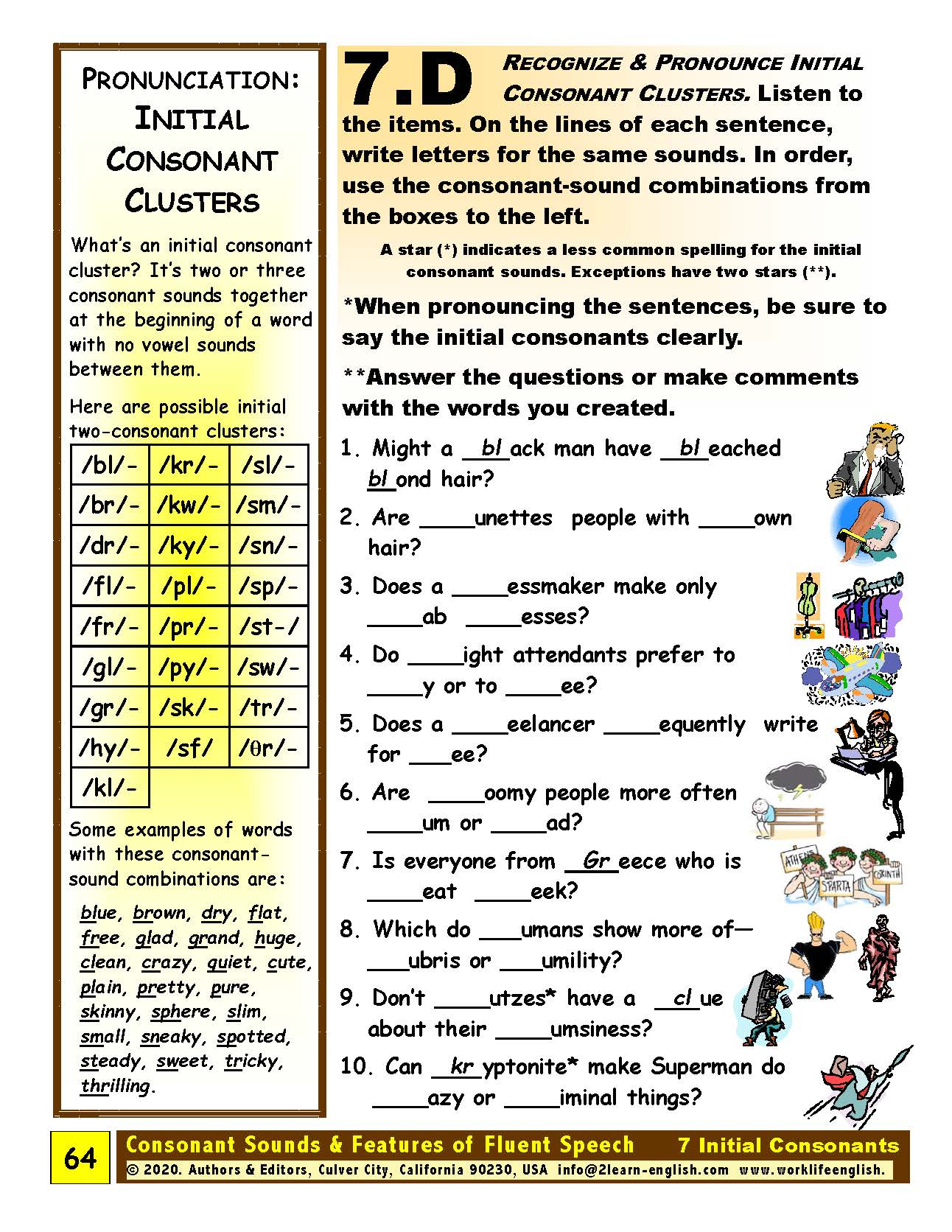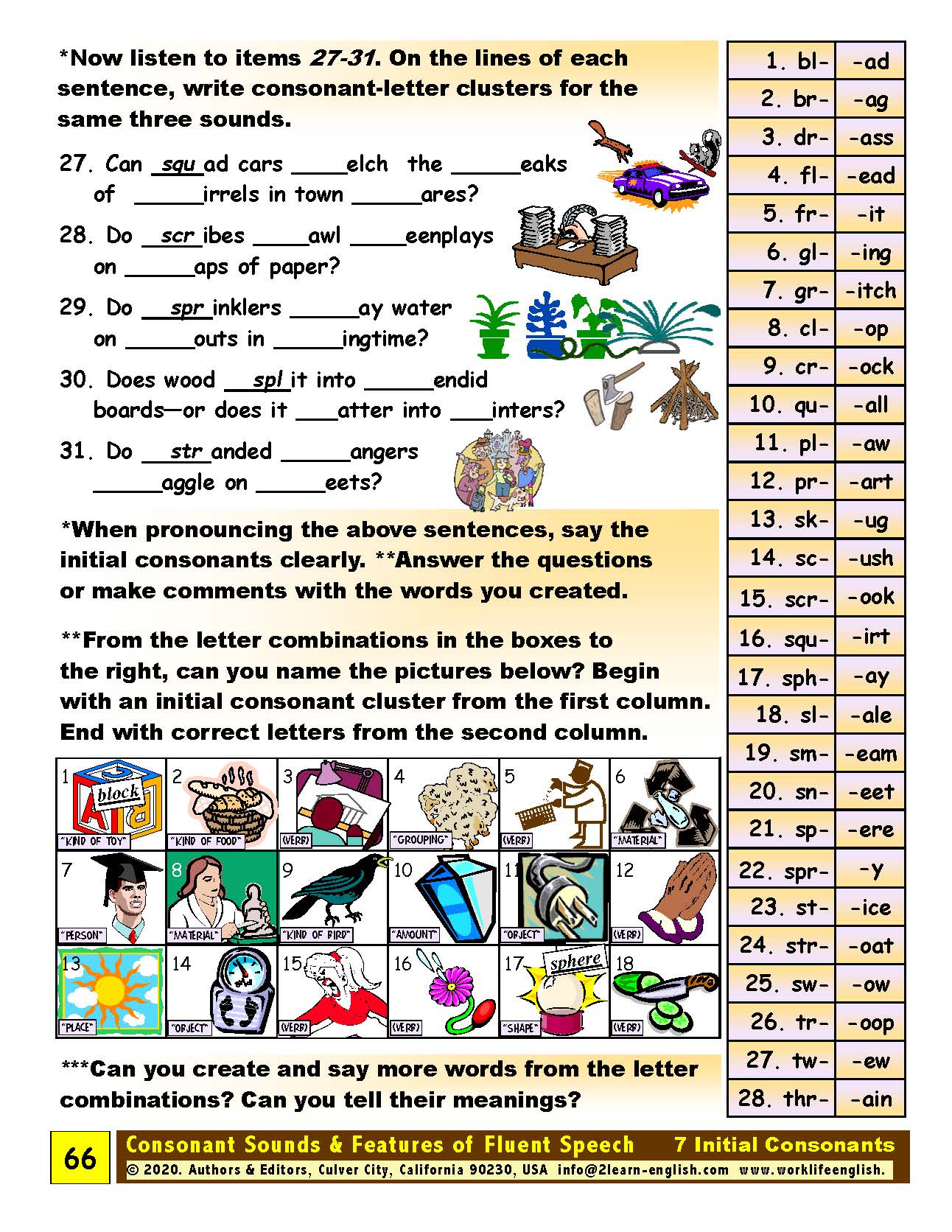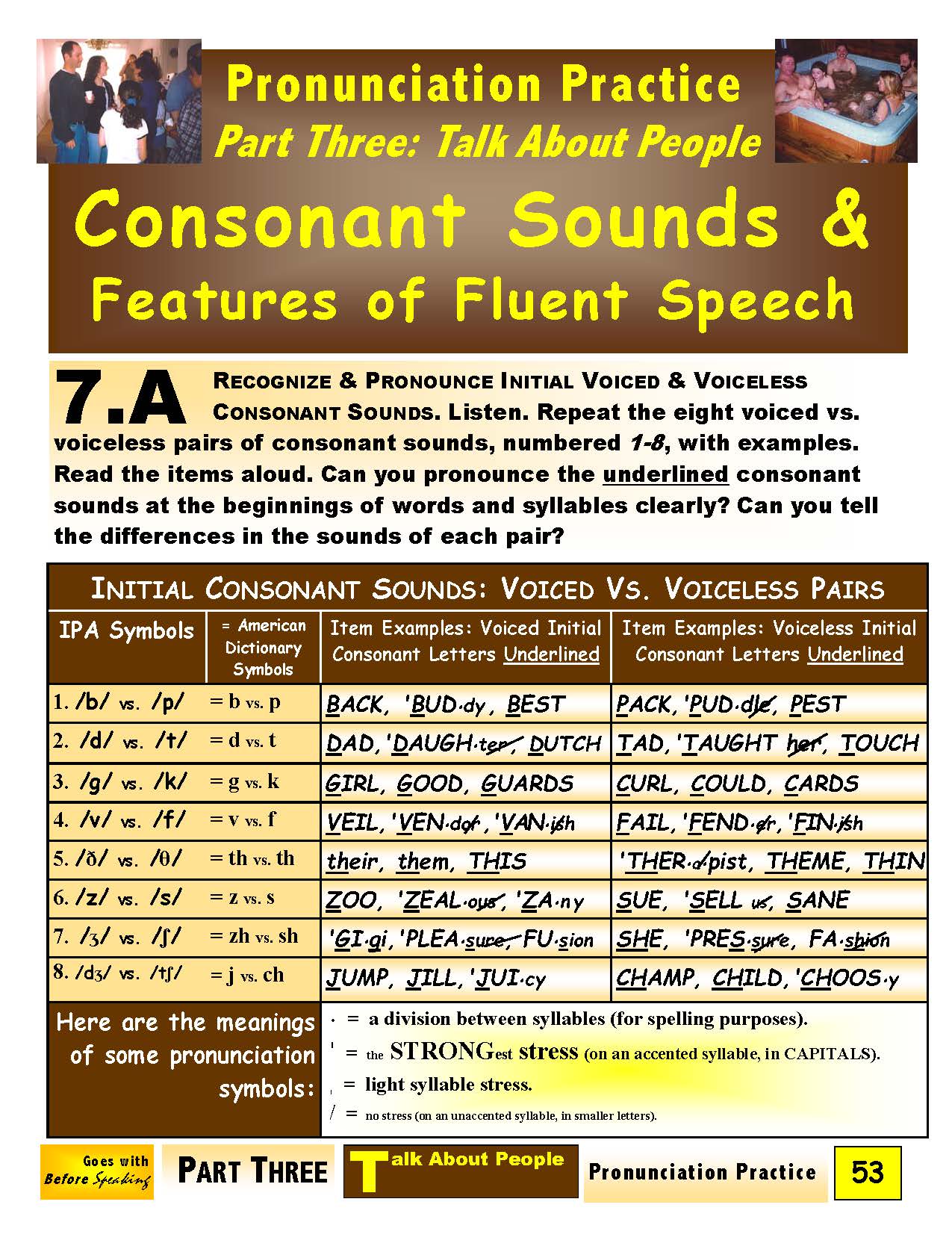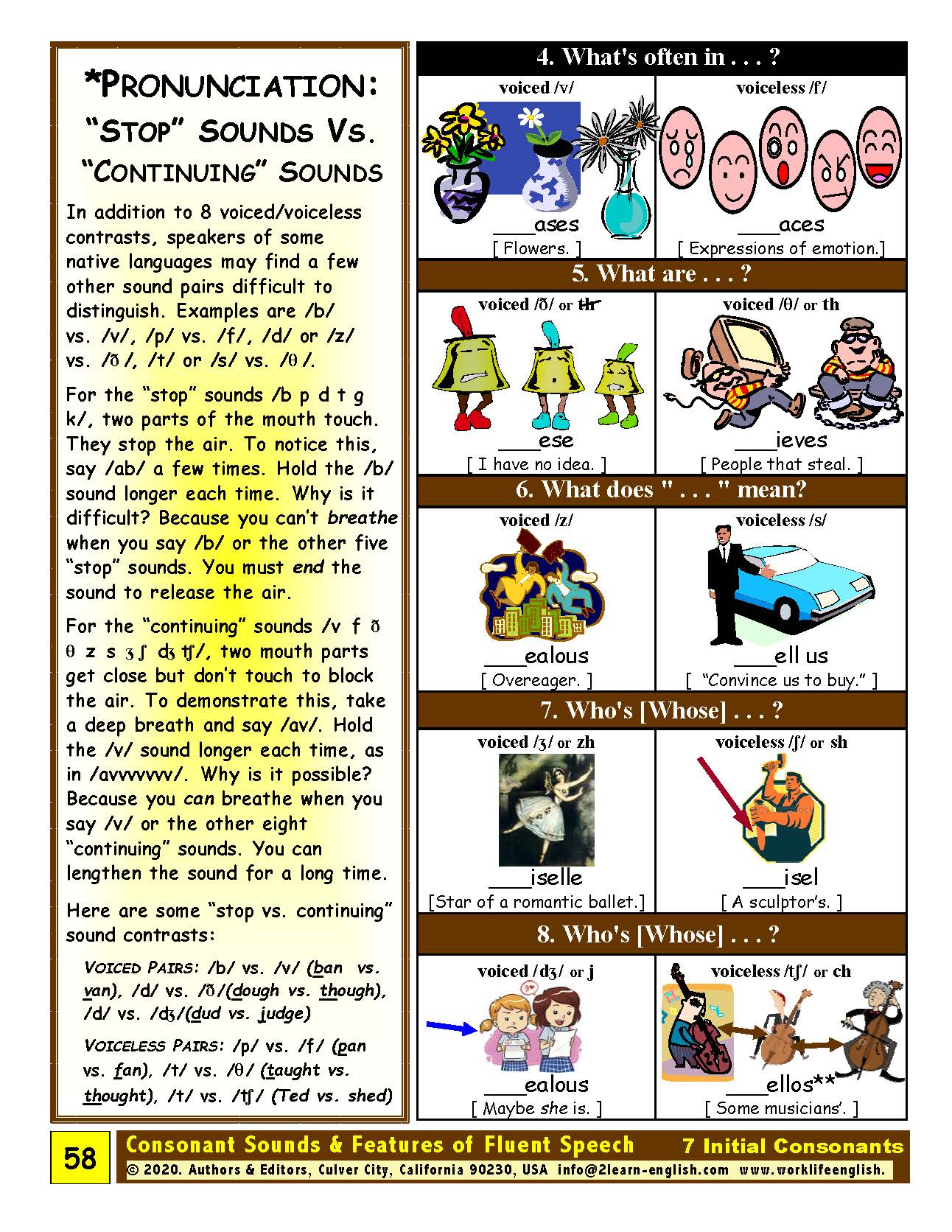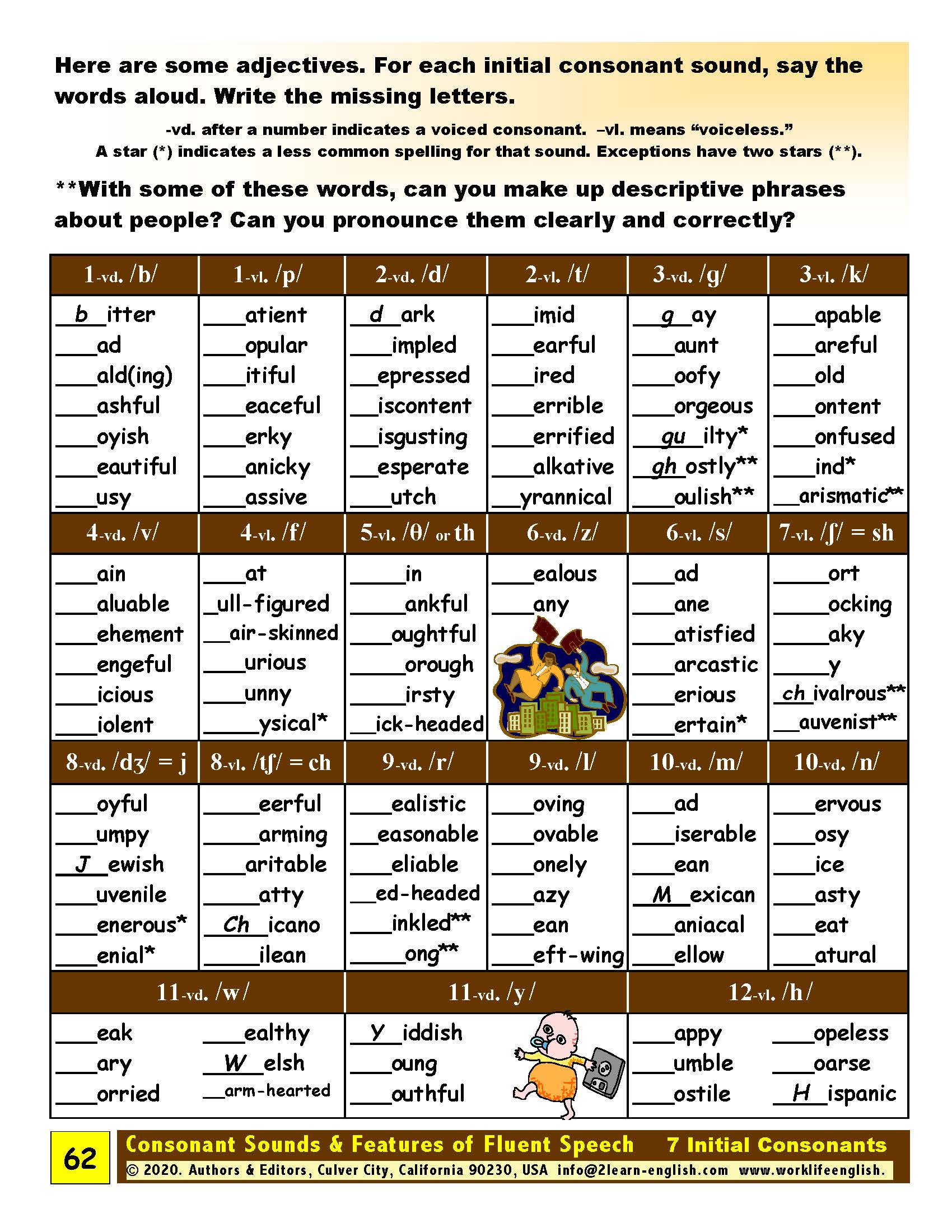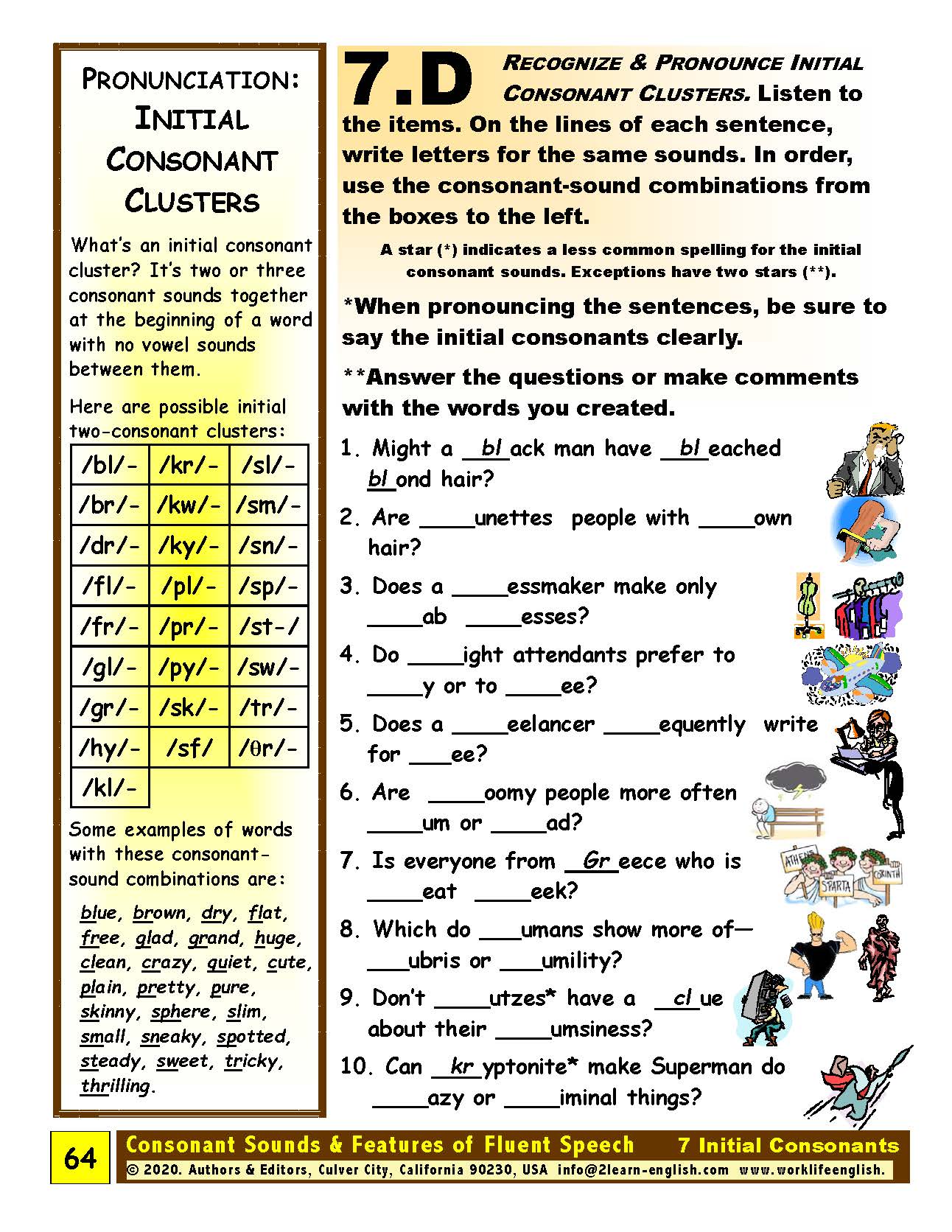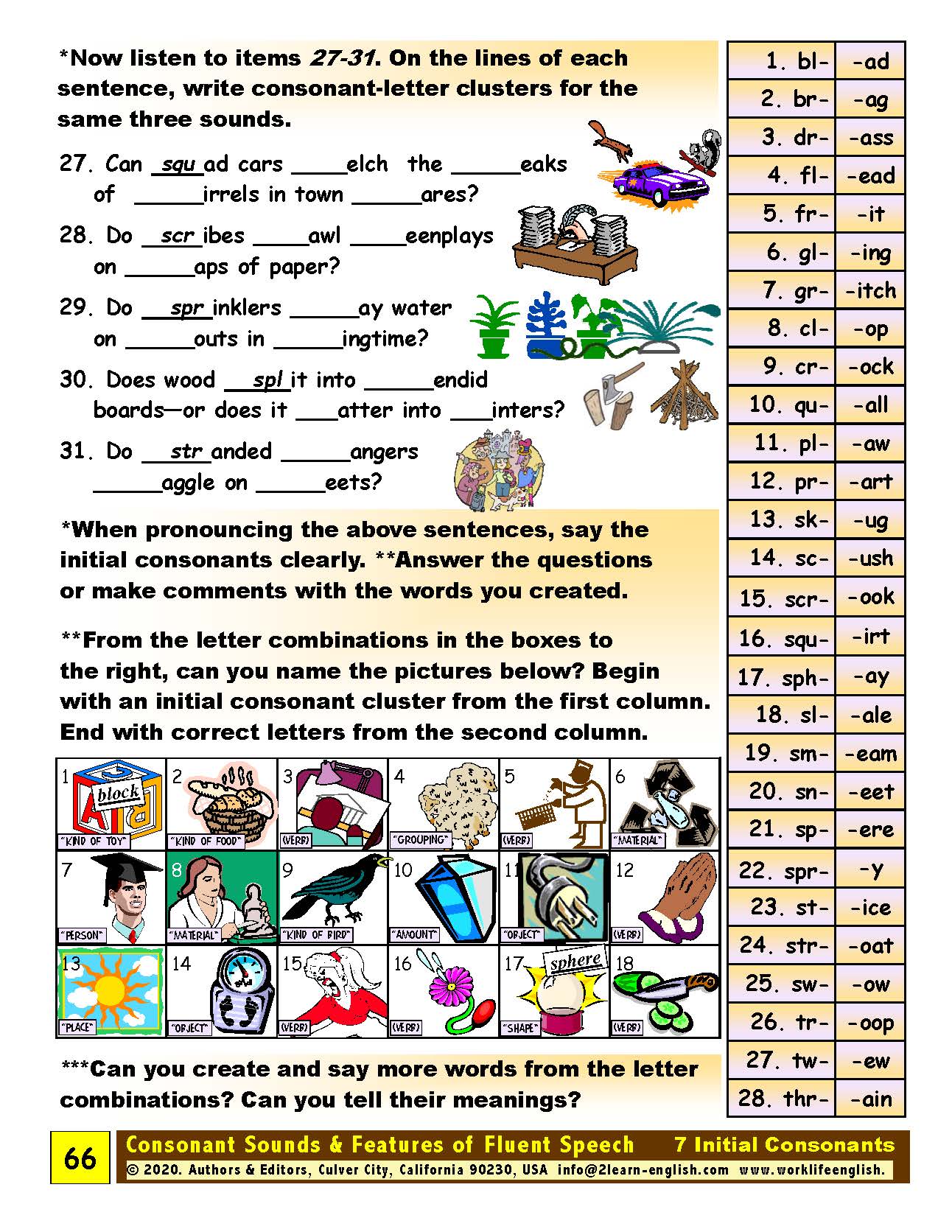Work/Life English
E-03.02 Recognize & Articulate Initial Consonant Sounds Describing People
E-03.02 Recognize & Articulate Initial Consonant Sounds Describing People
Sections 7.A to 7.D (Consonant Sounds) of Part Three-7: Talk About People, of Pronunciation Practice (Before Speaking) pages 53-66 + Answer Key & Audioscript Pages 28-35 with Correct Responses & Extras
14 + 8 = 22 pages
Who It’s For: High-Beginning to Intermediate Developers of Oral-Language Skills Who Want to Hone in on Initial Consonant Sounds in Talk About People
Why It’s Useful: Analogous to Part Three-7 of Beginners’ Before Speaking with Pronunciation Principles, the aims of these Pronunciation Practice sections are to “Recognize & Pronounce Initial Voiced vs. Voiceless Consonant Sounds,” “Contrast Initial Consonants,” “Get & Use All Initial Consonants,” “Work with Initial Consonant Clusters.” Sidebar Pedagogy deals with how to articulate consonants (with two or more mouth parts [almost] touching, as illustrated in diagrams); voicing (vibrating the vocal cords—instead of silently pushing out air); consonant orthography; sounds that “stop” the flow of air vs. those that “continue” it; comparing / r / with / l / & / w /; articulating sounds that don’t occur in voiced / voiceless pairs ( / y m n h / ); and initial consonant clusters (blending of sounds with no vowels between them). These teaching / learning points lend themselves to the repetition of “Funny Phrases & Silly Sentences.” There are humorously illustrated items to differentiate, descriptive vocabulary in which to insert consonant letters, word-building charts, tongue-twisting questions to answer, letter-combinations to manipulate, and other amusing things to do.
What You’ll Do:
[1] In 7.A, listen and repeat the sounds of eight pairs of consonants:

Note that in each pairings, the phonemes are pronounced with the same mouth parts (almost) touching, but that the first is “voiced” (said with vibration of the vocal cords) while the second is “voiceless” or “unvoiced” (said without involvement of the larynx but with a puff or stream of air). Identifying these differences, practice articulating them in funny sounding phrases. Spell and contrast them in 7.B, including the “Stops” vs. the “Continuants.” In 7.C, learn to pronounce eight other consonant sounds in initial word position. Practice.
[2] In 7.D, follow equivalent steps in spelling initial consonant clusters—blendings of consonant sounds such as bl-, fr-, qu-, sk-, sph-, thr-, and the like. Articulate these in fun (tongue-twisting) questions to answer. If it helps, consult correct responses, notes, and extras in the attached Answer Key & Audioscript pages.
Couldn't load pickup availability
